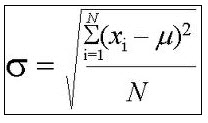Semi-Partial Correlation Calculator
Instructions: This tool will show you step-by-step calculations of the semi-partial correlations for three variables \(X_1\), \(X_2\) and \(X_3\). Please type your samples, using either a comma or space separated format (For example: "2, 3, 4, 5", or "3 4 5 6 7").
Part Correlation Calculator
The part correlation coefficient, also known as semi-partial correlation coefficient, assesses the degree of association between two variables \(X_1\) and \(X_2\), when controlling (keeping constant) a third variable \(X_3\), but only one variable. Mathematically, the partial correlation between \(X_1\) and \(X_2\), when controlling for \(X_3\) for \(X_2\) only is written as \(r_{1(2.3)}\), and it is computed using the following formula:
\[r_{1(2.3)} =\frac{r_{12} - r_{13}r_{23} }{\sqrt{1 - r_{23}^2 }}\]Also, the partial correlation between \(X_1\) and \(X_2\), when controlling for \(X_3\) for \(X_1\) only is written as \(r_{1(2.3)}\), and it is computed using the following formula:
\[r_{2(1.3)} =\frac{r_{12} - r_{13}r_{23} }{\sqrt{1 - r_{13}^2 }}\]If you want to compute the partial correlation between \(X_1\) and \(X_2\), controlling \(X_3\) for both \(X_1\) and \(X_2\), then you can use our partial correlation coefficient calculator instead. Or, if you want to compute the correlation between \(X_1\) and \(X_2\) without controlling for any other variable, you can use this Pearson's correlation coefficient calculator instead.


